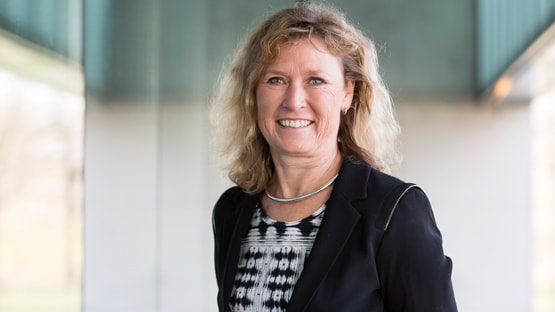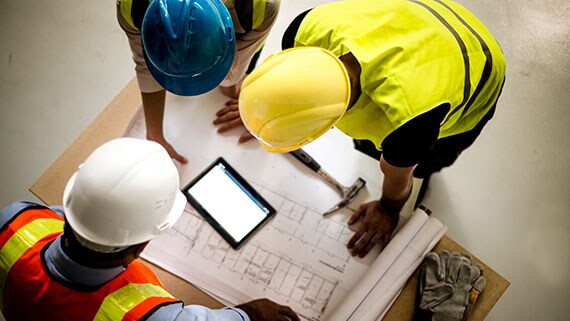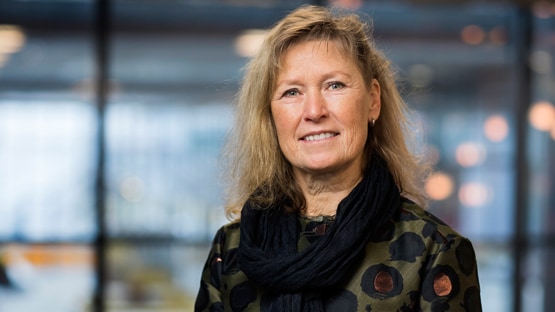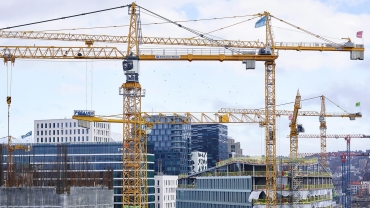The Transition Agenda for a Circular Building Economy
"There's still a great deal to be done to be completely circular in the Netherlands"
By 2050, the built environment in the Netherlands must be completely circular. Prof. Elphi Nelissen, Professor of Building Sustainability at Eindhoven University of Technology (TU/e) chairs the team that has drawn up plans for the first phase of that transition: the Transition Agenda for a Circular Building Economy. The day before this interview took place, she was asked to also take the lead for implementation of the plans. The objective: to set up a “base camp” from which the building sector can start on the long climb to the summit in 2023. This interview is with an idealistic but pragmatic scientist and administrator: “A number of companies are already claiming to be highly advanced as regards circularity, but I think progress is still disappointing. There’s still a great deal to be done.”

- What motivates you to invest time and energy in chairing the transition team?
“I enjoy it, but that’s a selfish reason. But I also find it inspiring to help keep the world liveable for the longer term. I can’t solve the big problem right now, but I can do my bit towards ensuring that things are different in the long run, at least in the Dutch building sector. That’s my idealistic motivation, and the more I read and hear about the subject, then the sense of urgency that I feel just gets greater.”
- What should get businesses in the building sector motivated too?
“Well of course because they don’t want to leave this world worse than it is now for future generations. On the other hand, there are also very good commercial reasons. We are working towards ensuring that all government tenders are conducted in a circular manner. So if a company doesn’t participate, it’ll miss the boat. To put it more positively: if you’re one of the pioneers, you can tap into an enormous market, including outside the Netherlands. That way, you can kill three birds with one stone, which seems to me a good reason for getting involved.”
- Are firms in the building sector aware of the commercial opportunities?
“I think so. The main concern they have is just that they don’t know how to take advantage of those opportunities. I share that concern, because nobody knows exactly how to do so. For example, when you demolish a building at the moment, it absolutely isn't achievable to analyse exactly which materials have which properties. It’s a lot cheaper to just use new materials when rebuilding. So the existing materials passport is by no means sufficient; we have a lot of work to do in that regard. And standardising circularity is also still an enormous challenge. You need to be able to weigh up whether it’s wiser to reuse a material or to use a new bio-based material. That’s pretty complex:you’re dealing with transport, with intrinsic energy, you name it. We’ll need to create tools to objectively measure, compare, and determine circularity. That’s something we need to get down to doing as quickly as possible.”
- Do building companies already have the necessary knowhow and abilities to make the transition?
“A number of companies are claiming to be highly advanced as regards circularity, but if you take a closer look, then progress is still disappointing. There’s still a great deal to be done, but that applies to everybody. A lot of the technologies we need are not yet available and there is a serious lack of knowhow. Companies will need to shoulder responsibility, but so will knowledge institutions and the government. That’s because the initial steps in a change always cost a relatively large amount of money, which you have to be able to come up with. That requirement is perfectly very clear, and steps are in fact being taken in that direction. As part of the Building Agenda, for example, the Building and Technology Information Centre has been set up to encourage research on five main themes - of which circularity is one - and to make the resulting knowledge available to everyone.”

- One of the aims is to create support in the building world and beyond. How is that going?
“It’s not as if within six months everybody in the country will understand what circularity is and why we should strive for it. That will take time. In large segments of the population, especially the less well educated, there’s still no awareness of circularity at all. What also plays a role is that people are already expected to do so much that they feel dispirited about it. They already have to stop using natural gas as an energy source, and they now have to “do circular” too. I understand their concern. That’s why we shouldn’t rush into it and start forcing people to do things. But the things that you do do need to be done properly right from the start. When it comes to making the existing housing stock more sustainable, we really need to pull out all the stops so as to do that in the most circular way possible, with the knowledge and support that we currently have available. The same applies to all new building projects. With hindsight, we may think that things could have been done much better, but we need to learn lessons from the projects that we can already implement at the moment.”
- How does the Dutch building sector compare internationally as regards circularity?
“We’ve looked at whether other countries are ahead of us, but that’s not the case. We really are the frontrunner, which offers us a great many opportunities. The Netherlands produces only 0.46% of the world’s CO 2 emissions; halving that figure wouldn’t in itself have a major impact. But if we can set an example and ensure that the rest of the world follows along, starting with Europe, then that will indeed have a huge impact. And a major economic impact too – they can perfectly well go hand in hand. It’s up to the European Commission, for example, to ensure that a standard that we develop in the Netherlands is also implemented in other countries. So that we aren’t the only country that makes building slightly more expensive – which is often the consequence – but that we, as Europe, are doing this because we believe that we owe it to the world.”
- When are things really going to accelerate so that there’ll be circular building on a large scale in the Netherlands?
“To do that, we first need to have the standards and the tools. You then have to make things obligatory, starting with low-level requirements that are slowly increased, just like with the energy passport. That’ll also be the road towards circular building, but for the time being we will continue to act as advocates and encourage people to tackle the challenge on their own initiative. So it’ll take a while. I think it won’t be until after 2023 at the earliest, and we’ll already have to have done a great deal by then.”
- Can we really expect a totally circular built environment in 2050?
“That’s a tricky question! If I’m honest: the final 5% will be extremely difficult, but for the other 95% we’ll have been successful. But that means we’ll all have to be prepared to spend money on it, and all take action together.”

Contact us

















